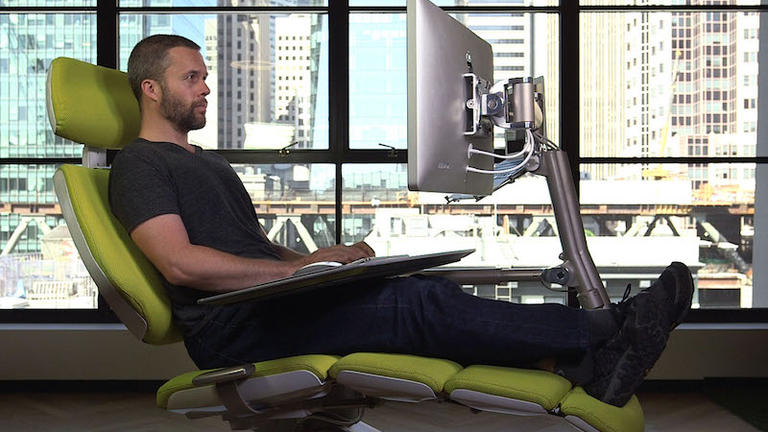An optimized for ergonomics workplace is supposed to be the first alternative when employers aim to maintain a healthy, and highly productive workforce. Understanding the impact, many of them focus on providing health insurance benefits and wellness programs. They are also committed in providing anything to keep them healthy and boost your business’ productivity – including sick leave.
When the topic of ergonomic workplace comes to light, some of these employers may question “what does it have to do with employees’ health?” and wonder the impact it has on their productivity. Here we are not only going to discuss why ergonomics workplace should be a vital part of your business, but also how to go about it.
Ask your employees the following question, if you would. Has their workspace helped them work effectively or has it only crippled them even further? Chronic low back pain, stiff neck, and repetitive strain injuries are four major complaints that the average employees have.
Yes, desk job may not be as physically demanding as other job, but it can be extremely hazardous to health all the same. With sedentary lifestyle being named the worst offender, sitting for hours on end for every single day that is required by typical desk job contributes to this serious health challenges. But it does not have to be that way.
One of the things that many of us at times overlooked is the fact that the combination of bad sitting posture and incompatible working tools poses a greater risk than we can imagine. In order to maintain healthy, and highly productive manpower, a proactive approach by implementing the following workplace ergonomics program is needed.
#1. Providing supportive, adjustable seats
Studies find that as much as 70-percent of the average adults are working in the industrialized workforce and more than 50-percent of them are suffering chronic back pain. This worrying finding, coupled with the cost of annual treatment for musculoskeletal conditions incurring a total of 77-billion, begs for immediate attention. Hence, the reason why having suitable ergonomic chairs for your office should be prioritized.
The number of options on the market can be overwhelming. But a good rule of thumb when you are on the market is find one with more adjustability options as it may suit all of your employers, despite their physical built. Invest on a high-quality chair with lumbar support, and comfortable cushioning.
#2. Adjusting proper desk height
The desk is the second most important thing in ergonomic set up. Sitting all day has been scientifically proven to contribute to back injury and increased high blood pressure. Adjust the desk to proper height that allows your legs to fit comfortably right under the desk with your forearm and upper arm in 90-degrees to 120-degrees angle when at rest. Alternatively, follow the standard 73 cm guideline.
#3. Ensuring proper lighting
Ceiling lights should not be the only source in your office. In addition, provide task lighting with various brightness level so that your employers may adjust and focus the light exactly where it is required.
#4. Reconsidering computer position
Desktop computers are the heart of majority of businesses in this day and age. Employers are now spending a lot more time with it, which is why setting up the keyboards to allow 90-degree angle for their elbows and the monitors away for about an arm’s length is considered important.
#5. Providing headsets
If your employers are required to be on the phone while they work, providing headsets will make them work more productively while at the same time, prevent neck pain and strain.
#6. Examining sitting posture
Bad sitting posture is cited as the root of all evils. Hunching at your desk while staring at your monitor for hours every day of the week is bound to cause problems. For proper sitting posture, adjust your seat so that your elbows are at the right angle and sit as close to the desk as possible with your hands rested on your desk surface and upper arms are parallel to your spine. Knees should be bent at 90-degree angle.
The moment you find your posture slacking, that is your cue to take micro-breaks. More on this in the following explanation.
#7. Encouraging regular breaks
Even with proper sitting posture, proper ergonomic and tools, the human body can still be fatigued. This is the primary reason why, as employees, you must encourage them to take micro-breaks every 20-minutes. Standing up, moving around, stretching, or just closing their eyes in a relaxed state for 2 minutes each break is guaranteed to freshen them up and boost productivity. Ergonomictrends.com has a nice roundup and comparison of the top ergonomic mice here.



Be the first to comment on "7 Office Ergonomic Tips to Maintain Healthy and Productive Workforce"